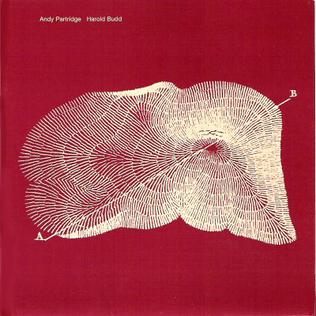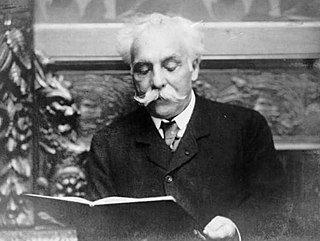Images is a cycle of piano pieces composed by Howard Skempton in 1989. This work and a variations set, The Durham Strike, are the only large-scale piano works by Skempton, although he has been composing piano music since the beginning of his career.
Howard While Skempton is an English composer, pianist, and accordionist.
The work was commissioned by Channel 4's HTV West for "Images", a six-part television series of documentaries dealing with various aspects of photography. The series was created to mark the 150th anniversary of the invention of photography. The producer, Barrie Gavin, wanted the music to be similar in concept to Erik Satie's Gymnopedies: in the words of the composer, the pieces were to be "like a sculpture viewed from different angles in a changing light." The pianist who performed Images for the TV series was Michael Finnissy.

Channel 4 is a British public-service free-to-air television network that began transmission on 2 November 1982. Although largely commercially-self-funded, it is ultimately publicly-owned; originally a subsidiary of the Independent Broadcasting Authority (IBA), the station is now owned and operated by Channel Four Television Corporation, a public corporation of the Department for Digital, Culture, Media and Sport, which was established in 1990 and came into operation in 1993. With the conversion of the Wenvoe transmitter group in Wales to digital terrestrial broadcasting on 31 March 2010, Channel 4 became a UK-wide TV channel for the first time.

ITV Wales and West, previously known as Harlech Television (HTV), refers to the Independent Television franchise area until 31 December 2013, licensed to a broadcaster by the regulator Ofcom.

A documentary film is a nonfictional motion picture intended to document some aspect of reality, primarily for the purposes of instruction, education, or maintaining a historical record. "Documentary" has been described as a "filmmaking practice, a cinematic tradition, and mode of audience reception" that is continually evolving and is without clear boundaries. Documentary films were originally called 'actuality' films and were only a minute or less in length. Over time documentaries have evolved to be longer in length and to include more categories, such as educational, observational, and even 'docufiction'. Documentaries are also educational and often used in schools to teach various principles. Social media platforms such as YouTube, have allowed documentary films to improve the ways the films are distributed and able to educate and broaden the reach of people who receive the information.
Images comprises eight preludes, two "songs" (The Cockfight: a traditional song and Song 2), a set of variations, eight interludes and a postlude (Postlude: The Keel Row). In concert, the order of the pieces is not fixed and is left for the performer to determine. The eight preludes contain the pieces that directly correspond to Gavin's request. Preludes 1–3, all written on three staves and in 3/8 time, share identical rhythmic and melodic structure of all melodic lines, with just some of the notes and the key changed. Prelude 4 is also in 3/8 time and has a somewhat similar rhythmic structure, slightly simplified and written on two staves. The other four preludes form two pairs of such almost identical pieces. Preludes 5 and 6 are both in 7/16 time, and 7 and 8 are in 6/16.
In Western musical notation, the staff (US) or stave (UK) is a set of five horizontal lines and four spaces that each represent a different musical pitch or in the case of a percussion staff, different percussion instruments. Appropriate music symbols, depending on the intended effect, are placed on the staff according to their corresponding pitch or function. Musical notes are placed by pitch, percussion notes are placed by instrument, and rests and other symbols are placed by convention.
The time signature is a notational convention used in Western musical notation to specify how many beats (pulses) are contained in each measure (bar), and which note value is equivalent to a beat.
In music theory, the key of a piece is the group of pitches, or scale, that forms the basis of a music composition in classical, Western art, and Western pop music.
The eight interludes were composed with specific scenes in mind and range from 18 to just 8 bars. Numbers 3, 5 and 8 employ free notation: there are no barlines, and the notes have no stems; note values are uniform throughout.





